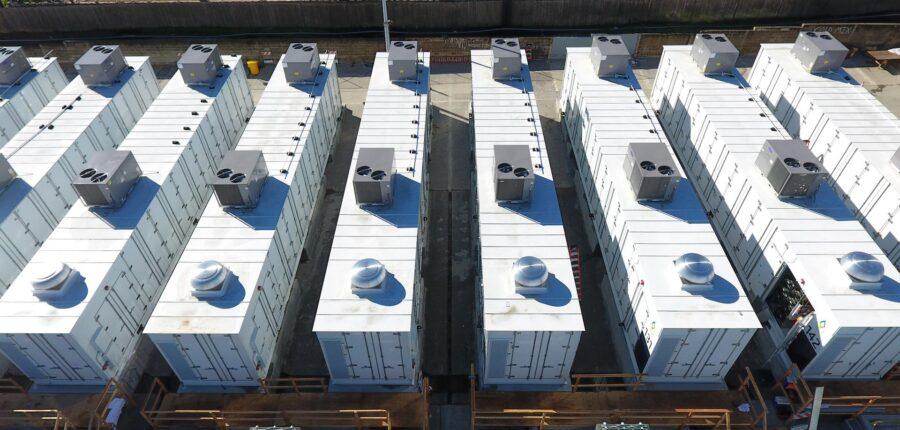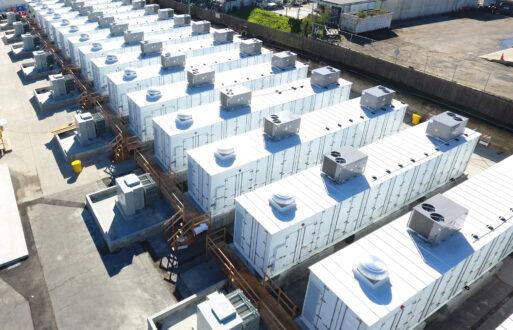Combined Plot of Hype Cycle and Technology Lifecycle

Sources: Gartner, Inc. and “Crossing the Chasm” (Geoffrey Moore)
Reaching the Tipping Point
Wood Mackenzie Power & Renewables/Energy Storage Association (ESA) U.S. Energy Storage Monitor recently provided more statistical evidence of the explosive growth in the energy storage market. It found that U.S. energy storage deployments increased 232 percent from Q1, 2018 to Q1, 2019.
The report underscores the rapid expansion in storage projects that is now well underway. It notes:
- 2019 deployments will have doubled from 2018
- 2020 deployments will triple from 2019
The report authors state that, “Utility procurements, changing tariffs and grid service opportunities all drive the market forward” and, they forecast that U.S. energy storage annual deployments will reach over 4.5 GW by 2024.

The Institute for Energy Economics and Financial Analysis (IEEFA) also released a report in June of this year, which stated that utility scale batteries will provide a major lift to the renewables sector, further undercutting coal and serving up a major challenge to fracked gas.

The data emanating from these two authoritative research reports strongly illustrate that battery storage has graduated from the “hype cycle” to commercial viability, and that it has “crossed the chasm” in that early adopters have already taken the baton from the innovators.
Like most technological advances in the past decade, the speed of change in the energy storage arena has surprised forecasters and has happened as fast as – if not faster than the preceding 10-years.
It’s as though Moore’s Law has finally found the energy industry.
The Increasing Speed of Change: Old School vs. New School
Before we discuss the impacts of the battery storage sea change, it is worth considering the speed of change “yesterday versus today” in order to highlight the urgency in planning for the future.
Let’s first summarize the adoption rates for what are (more or less) essential household technologies that have evolved over the last almost 130 years:

Now let’s replace the older household stuff with newer tech. Note that the date range has shortened to just 65-years:

The second graph depicts very vertical, fast-rising adoption rates, and is a visual reminder that the pace of technological change – including for battery storage – is likely to advance rapidly. Naysayers and skeptics on the viability of utility (or even resdiential) scale batteries to electric vehicles have officially been served notice.
The Impact? Rapid Disruption
The Rise of Hybrid Power Plants
Wind, solar, and battery storage could well equal the hybrid power plant of the future. Two recent deals (between NextEra Energy Resources-Western Farmers Electric Cooperative and NextEra-Portland General Electric) will test the capability of large-scale battery installations to shape and firm utility renewable resources.
Additionally, with farming profits stagnant or decreasing, rural communities are closely following these type of clean energy deals, as siting them may well provide a more consistent – and more profitable annual revenue stream than raising many crops.
Market Rule Changes
In the race between technology and regulatory/market design, technology wins seven days a week and twice on Sunday. While FERC Order 841 essentially mandated energy storage be integrated into wholesale markets by the end of 2019, deficiencies in some RTO markets still exists. PJM’s ten-hour capacity requirement has certainly garnered the most controversy. With PJM searching for a new CEO and FERC searching for two more commissioners, we can expect that energy storage-related market design changes will continue until at least the end of the year.
As storage technology continues to improve and drop in cost, market designs will continue to evolve in a way that recognizes and adequately rewards battery storage. Further, five-minute Locational Market Prices (LMPs) will become more important as solar, wind, gas and battery storage all jockey for a slice of the ancillary service market (ASM) revenue pie.
The Role of “Digitalization”
While research indicates the utility scale battery storage will grow the fastest, retail battery storage from behind the meter will also continue to grow quickly. As such, the importance of digitalization will grow exponentially inside utilities. Data scientists will be expected to gain a deeper understanding of end user behavior patterns in order to accurately calculate short and long-term load forecasts.
Electric Vehicle Growth
The reduction in battery costs and the increase in scale will accelerate the growth of electric vehicles. Sila Nanotechnologies is commercializing silicon mode materials (“Black Magic Dust”) that will replace graphite in lithium-ion nodes, extending the life of an EV battery by 20 percent initially, and increasing to 40 percent. Sila partner Daimler Benz, and the auto industry at-large, are pivoting towards an EV future.
Greater Difficulty in Integrated Resource Planning (IRP)
IRP has been (and will continue to remain) focused on the short term due to the technological revolution in the energy industry. Other state commissions will follow the IRP reset example of Arizona Public Service (APS) and Arizona Corporation Commission (ACC) play an increasing role in resource planning discussions.
Peak Demand Shaving
RTO/ISO transmission billing oftentimes centers around peak demand events for utilities. Expect utilities to leverage battery storage to help reduce the cost of participating in regional markets by shaving peak load demands.
RTO Transmission Planning Processes
Expect battery storage to play a more visible role in regional transmission planning processes. Recent PJM transmission planning discussions provide a great example of increasing pushback to long-term, large transmission system buildouts. While some of the market design questions are still being formulated, it is certain that utility-scale battery technology will be factored in when considering some transmission system upgrade decisions.
Fewer Transmission Upgrades?
In some cases, economics now favor battery storage over transmission upgrades to solve local capacity challenges. The recent wildfires in California have also caused a re-evaluation of the wisdom of transmission buildouts across mountainous regions to serve less populated areas.
Microgrid Shift
The capabilities and promise of battery technology will not be limited solely to utilities. Anticipate that the Community Choice Aggregator folks will take notice and actions leveraging the tech if the economics warrant.
Net Metering Debate Impacts
As residential solar rapidly expands, the amount of surplus power flowing back to the grid also increases. Renewed rate discussions will ensue and in fact, falling consumer battery prices may well incent people to buy home cells rather than selling to the grid at negative prices. The impact here is potentially huge.
Accelerated Retirements of Coal and Peaking Gas Plants
If your plant has a capacity factor of 30 percent or less, you could be in trouble. The economics of storage versus building a gas peaker are beginning to tip in favor of storage.
Asset Optimization
As the RTO/ISO market designs become more welcoming to storage over the next few years, the ability to optimize your battery will become critical. A properly optimized battery could yield an ROI in the mid-teens.
The Battery Storage Ship Has Left the Port
The following chart from June 2019 IEEFA report illustrates the potential “stacked benefits” of battery storage that developers and utilities could enjoy if they play their cards correctly. And, they are large enough to grab the attention of RTO/ISO market operators, state regulators and the FERC.
Potential battery storage uses and combinations.

While recent safety issues in Arizona and South Korea have understandably gained concerned attention, the battery storage ship has indeed left the port. The impact to our industry will be felt on the same level, if not greater, than the fracking revolution.
If the extremely optimistic forecast for large-scale battery storage holds a surprise, it would probably be adoption and penetration of the technology may well happen faster than anticipated.
Other resources
Our World in Data
The Rising Speed of Technology Adoption







